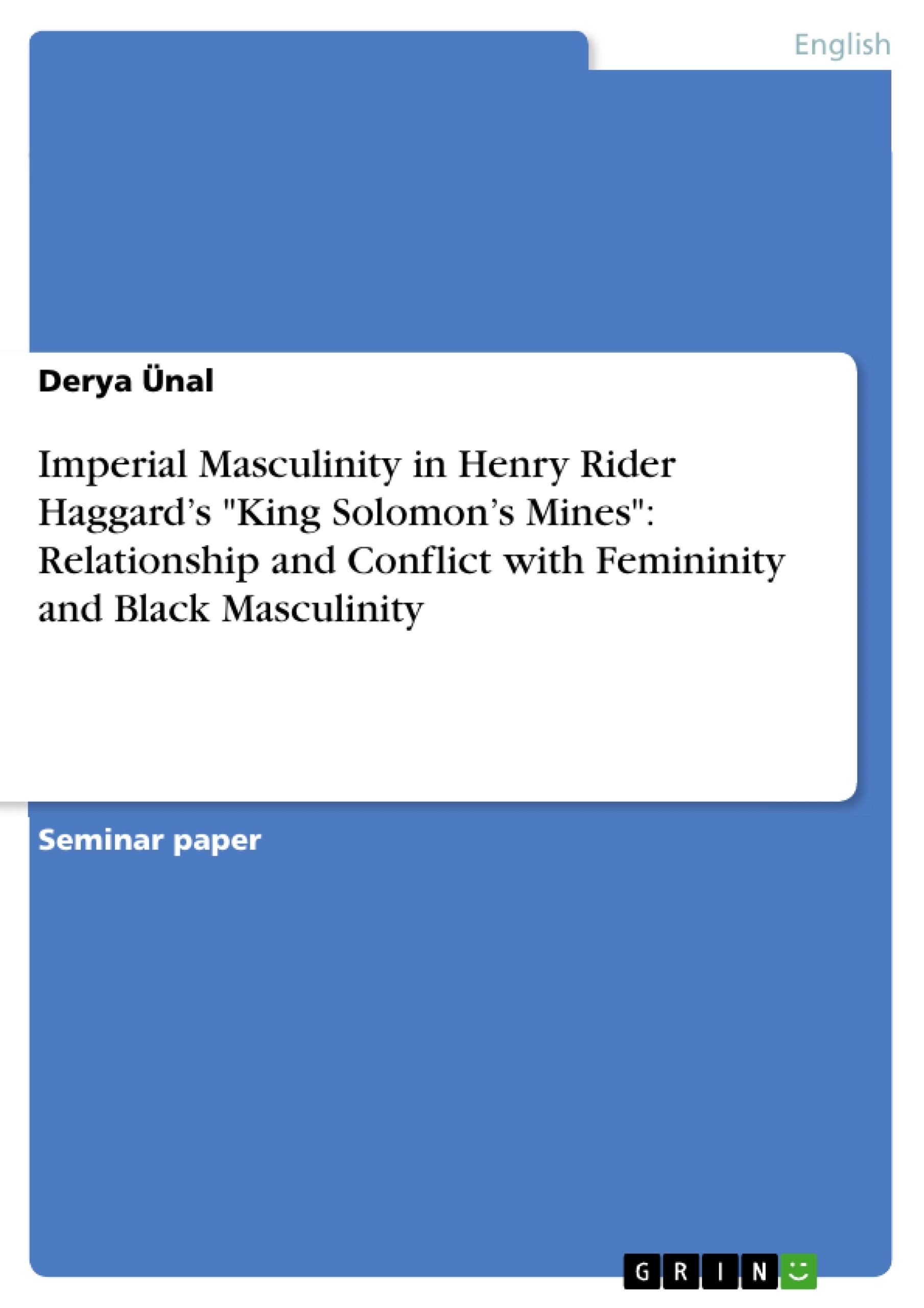King Solomon's Mines was written at a time when Victorian society was confronted with a long-term cultural shift that took place towards the fin de siècle. Women’s rights movements had emerged since the 1860’s. Their demands focused on extending their role in Victorian society and hence threatened the patriarchal establishment. In this milieu, male writers perceived these female advancements, which also took place in literature, as jeopardy of their own creative space. Many female writers were writing about social observations, and were thus considered as only writing about the unexciting and ordinary. As a reaction, efforts were made towards reclaiming the novel as a male exclusivity. This process was detectable in the foundation of literature clubs only for men, and the revival of the adventurous, exciting romance. With this came the emergence of literary characters, such as Allan Quatermain, who act as the heroic male and express their patriarchal demands. They can be seen as an attempt to preserve the social position of the male from its own fragmentation.
In this paper, I want to analyze this attempted preservation of white masculinity and its conflict with the notions of race, gender and class from a post-colonial perspective. It is vital to notice that the recuperation of masculinity took place not in the home country, but in the colonies, where its regeneration was still considered possible. As a result, this notion of colonial masculinity is closely aligned with the appearance of Imperialism. For decades, the collective myth of colonialism had been nurtured by the adventurous tales that were circulating in Britain since Defoe’s Robinson Crusoe. It intensified again during the Age of Imperialism and stimulated its readers to imitate the heroic protagonist. The new Imperialism presented itself as a purely male sphere of influence and its administration lay entirely in the hands of men. Its masculine representation was further boosted by the appearances of soldiers and hunters as colonial heroes and the supply for its administration was fuelled by the aforementioned crisis of masculinity taking place in later Victorian Britain. The journey to the colonies promised freedom from the restrictions of the male social roles back home, and it opened new possibilities for the development of a new type of masculinity, that of the imperial hero. Victorian Imperialism thus contained and enforced the "masculine imperative".
Table of Contents
- Introduction
- The Notion of the Imperial Hero
- The Imperial Hero and Femininity
- Sexualized Landscape
- Negative Femininity
- Passive Femininity
- The Imperial Hero and Native Masculinity
- Hybrid Natives
- Male Villains
- Conclusion
Objectives and Key Themes
This paper examines the portrayal of white masculinity in Henry Rider Haggard's *King Solomon's Mines* from a postcolonial perspective, focusing on its attempted preservation and the conflict with race, gender, and class.
- The development and characteristics of the imperial hero as a literary archetype
- The relationship between the imperial hero and femininity, including representations of sexualized landscapes, negative female characters, and passive female roles
- The depiction of native masculinity, particularly in the context of hybridity and male villains
- The significance of the novel's setting in colonial Africa and the ways in which the text reflects the imperial ambitions of late Victorian Britain
- The role of the novel in reinforcing and challenging existing social hierarchies and power structures
Chapter Summaries
The Introduction establishes the context of *King Solomon's Mines* as a product of late Victorian society and its anxieties surrounding gender roles and colonialism. It highlights the novel's success in reviving the Victorian quest romance and its contribution to the "Lost World" genre. The text further explores the burgeoning women's rights movement and its impact on male writers' perceptions of their creative space.
The chapter titled "The Notion of the Imperial Hero" introduces the three main male characters: Allan Quatermain, Captain John Good, and Sir Henry Curtis. The chapter analyzes each character's individual characteristics and how they defy or embody traditional heroic tropes. It also examines the ways in which the colonial setting enables the characters to redefine their masculinity and status.
The following sections delve into the imperial hero's interactions with femininity and native masculinity. "The Imperial Hero and Femininity" explores the text's representation of sexualized landscapes, negative female characters, and passive female roles. The section on "The Imperial Hero and Native Masculinity" focuses on the concept of hybridity and the portrayal of male villains.
Keywords
The main keywords of the paper include: imperial masculinity, colonialism, postcolonialism, Victorian literature, gender, race, class, *King Solomon's Mines*, Henry Rider Haggard, Allan Quatermain, femininity, native masculinity, hybridity, villains, sexualized landscape.
- Quote paper
- Derya Ünal (Author), 2012, Imperial Masculinity in Henry Rider Haggard’s "King Solomon’s Mines": Relationship and Conflict with Femininity and Black Masculinity, Munich, GRIN Verlag, https://www.grin.com/document/212822



